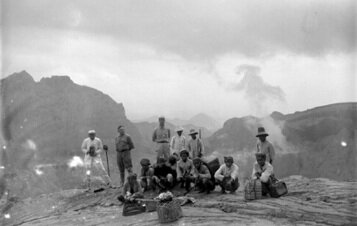
About
In conducting the first major historical study of disaster photography in a modern colonial context in Asia, this project will historicise understandings of disaster and the role of the key visual technology of our time, photography, in shaping how we conceive interactions and distinctions between the natural and social worlds.
The project examines how photography has informed modern understandings of disaster as a process that shapes victims who suffer and respondents who observe and intervene. It makes a case study of Indonesia while under Dutch colonial rule (up to independence in 1950) and focuses on both natural and regime-made disasters that occurred during the first century after photography was first invented (from c. 1840). In this period, modern European empires were at the height of their global expansion, and became increasingly interventionist in Indigenous environments and societies.
This research therefore aims to trace, first, the impact of modern colonial contexts in shaping how visual representations of disaster were formed in the recent past. Second, in focusing on the human suffering common to disasters of different origins, this project also seeks to reveal how photography has informed the distinctions we make between the natural and the cultural realms, between environment and society.
The project aims to advance four major fields of scholarship:
It addresses understandings of modern European imperialism by examining how a range of actors, European and Indigenous, interpreted and responded to the human impact of the major disasters that occurred in the last century of colonial rule.
It expands historical understandings of photography as it developed in the first century after its invention by focusing on how it was deployed in colonial disasters.
It contributes to environmental histories of disaster by making the first detailed case study of how photography was used to further understandings of and responses to natural disasters in an Asian colony.
It extends cultural histories of war by bringing analysis of how victims of political violence were represented into a contiguous field with study of the human impact of natural disaster.
This project has been funded by an Australian Research Council Discovery Grant (DP170100924) (2017–19), a Brill Fellowship (2018) and the Tholenaar van Raalte Fellowship in Photography (2018).